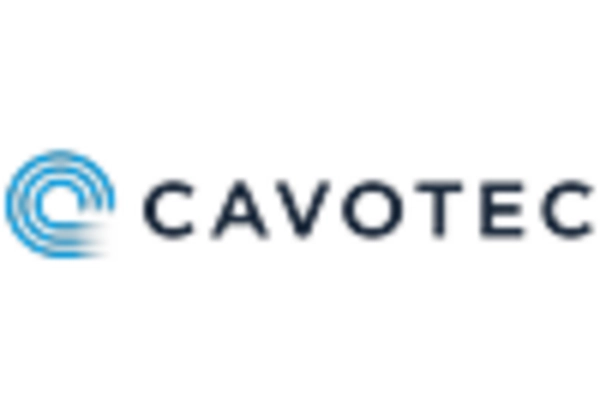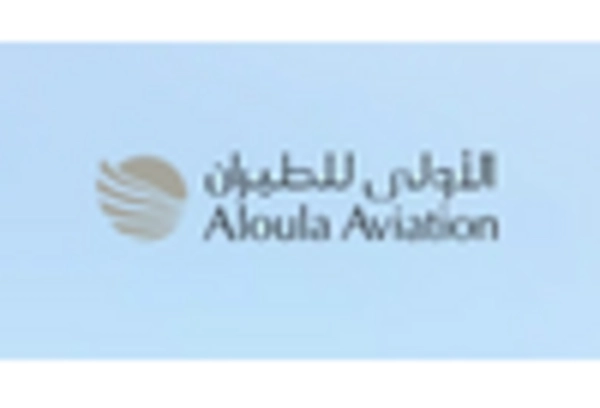Increasing Air Traffic Demand
The aircraft towing-equipment market is experiencing growth driven by the rising demand for air travel in the United States. As more airlines expand their fleets to accommodate increasing passenger numbers, the need for efficient ground handling equipment becomes paramount. The Federal Aviation Administration (FAA) projects that air traffic will grow by approximately 3.5% annually over the next decade. This surge in air traffic necessitates advanced towing equipment to ensure timely aircraft movement, thereby enhancing operational efficiency. Consequently, manufacturers are focusing on developing innovative towing solutions that can handle larger aircraft and improve turnaround times. The increasing air traffic demand is likely to propel investments in the aircraft towing-equipment market, as airlines seek to optimize their ground operations and reduce delays.
Growing Focus on Cost Efficiency
Cost efficiency remains a pivotal concern for airlines and ground handling companies, significantly impacting the aircraft towing-equipment market. As operational costs continue to rise, stakeholders are increasingly seeking solutions that minimize expenses while maximizing productivity. The implementation of energy-efficient towing systems, such as electric tow tractors, can lead to substantial savings in fuel and maintenance costs. Industry analyses suggest that transitioning to electric towing solutions could reduce operational costs by up to 30%. Additionally, the emphasis on reducing turnaround times and improving fleet utilization further drives the demand for efficient towing equipment. As companies strive to enhance their bottom line, the aircraft towing-equipment market is likely to witness a surge in demand for cost-effective solutions that align with these financial objectives.
Expansion of Airport Infrastructure
The expansion of airport infrastructure across the United States is a significant driver for the aircraft towing-equipment market. As airports undergo renovations and expansions to accommodate increasing passenger volumes and larger aircraft, the demand for efficient ground handling solutions rises correspondingly. Investments in airport infrastructure are projected to reach approximately $100 billion over the next decade, with a substantial portion allocated to enhancing ground operations. This expansion necessitates the procurement of advanced towing equipment capable of supporting new aircraft types and improving turnaround times. Consequently, the aircraft towing-equipment market is likely to benefit from this trend, as airports seek to modernize their ground handling capabilities and enhance overall operational efficiency.
Technological Advancements in Equipment
Technological innovation plays a crucial role in shaping the aircraft towing-equipment market. The introduction of advanced materials and engineering techniques has led to the development of lighter, more durable towing equipment. For instance, the use of composite materials can reduce the weight of tow tractors, enhancing fuel efficiency and operational performance. Moreover, the integration of automation and robotics in towing systems is becoming more prevalent, allowing for precise maneuvering and reduced labor costs. According to industry estimates, the adoption of automated towing solutions could increase operational efficiency by up to 20%. As airlines and ground handling companies seek to modernize their fleets, the demand for technologically advanced towing equipment is expected to rise, further driving growth in the aircraft towing-equipment market.
Regulatory Compliance and Safety Standards
The aircraft towing-equipment market is significantly influenced by stringent regulatory compliance and safety standards imposed by aviation authorities in the United States. The FAA and other regulatory bodies mandate specific safety protocols for ground handling operations, which include the use of certified towing equipment. Compliance with these regulations is essential for airlines and ground service providers to avoid penalties and ensure safe operations. As a result, there is a growing emphasis on investing in high-quality towing equipment that meets or exceeds safety standards. This trend is likely to drive the market as companies prioritize safety and compliance, leading to increased demand for certified towing solutions. Furthermore, the potential for enhanced safety measures may also contribute to a reduction in operational disruptions, thereby benefiting the overall efficiency of the aircraft towing-equipment market.

















Leave a Comment